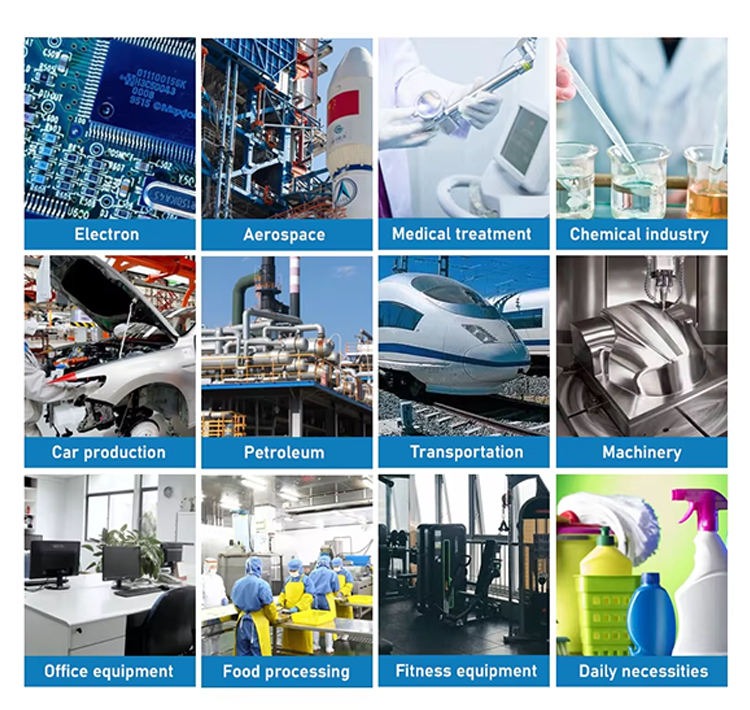The causes of shrinkage cavities in injection molded parts are complex, mainly involving materials, molds, and processes. The following is a detailed analysis:
I. Material Factors
**High Shrinkage Rate:** Different plastic materials have different shrinkage rates. Some materials, such as polypropylene (PP) and polyethylene (PE), are crystalline plastics. During crystallization, their molecular chains undergo regular arrangement, resulting in greater volume shrinkage and making them prone to shrinkage cavities.
**High Moisture Content:** Plastic raw materials may absorb moisture during storage and transportation. When the moisture content is excessive, the moisture will turn into water vapor during injection molding, occupying space and forming shrinkage cavities upon cooling. Simultaneously, moisture also affects the fluidity and thermal stability of the plastic, further exacerbating shrinkage cavities.
**Impuric Materials or Impurities:** If other impurities or different types of plastics are mixed into the plastic raw material, the material properties will be uneven. During molding, the shrinkage of different components will be inconsistent, thus producing shrinkage cavities.
II. Mold Factors
Uneven Cooling System: An improperly designed cooling channel system, such as uneven channel distribution or inconsistent distances from the cavity surface, can lead to varying cooling rates in different parts of the plastic part. Areas that cool quickly experience less shrinkage, while slower-cooling areas shrink more, resulting in shrinkage cavities.
Improper Gate Design: The size, number, and location of gates significantly impact plastic flow and filling. If the gate size is too small, the molten plastic faces greater resistance when filling the cavity, leading to incomplete filling and shrinkage cavities in areas far from the gate. Insufficient gate quantity or improper gate placement can also prevent uniform filling of the cavity, resulting in localized material shortages and shrinkage cavities.
Mold Cavity Surface Roughness: Excessive surface roughness in the mold cavity increases friction between the molten plastic and the cavity surface, affecting plastic flow and filling, resulting in an uneven surface and increasing the likelihood of internal defects such as shrinkage cavities.
III. Process Factors
**Insufficient Injection Pressure:** Injection pressure is crucial for filling the mold cavity with molten plastic. Insufficient pressure prevents the molten plastic from fully filling the cavity, leading to shrinkage and shrinkage cavities during cooling. This is especially true for complex, large-sized injection molded parts, where sufficient injection pressure is necessary for complete cavity filling.
**Insufficient Holding Time:** The holding time continuously replenishes plastic as it cools and shrinks, compensating for the volume reduction. Insufficient holding time means the molten plastic doesn't receive enough replenishment during cooling, easily resulting in shrinkage cavities within the part.
**Excessively High Melt Temperature :** Excessively high melt temperatures reduce the viscosity and increase the fluidity of the plastic. After filling the cavity, significant volume changes during cooling and shrinkage easily lead to shrinkage cavities. High temperatures can also degrade plastic molecular chains, affecting the performance and quality of the part.
**Insufficient Cooling Time:** Insufficient cooling time prevents adequate heat dissipation from the part. Continued cooling and shrinkage after demolding results in shrinkage cavities. Furthermore, insufficient cooling time affects the dimensional stability and mechanical properties of the part. IV. Equipment Factors
Insufficient Plasticizing Capacity of Injection Molding Machine: Severe wear of the plasticizing components of the injection molding machine or an unreasonable design of the plasticizing screw can lead to incomplete melting and uniform mixing of the plastic during the plasticizing process. This results in uneven quality of the molten plastic entering the mold cavity, causing shrinkage cavities during cooling and shrinkage.
Hydraulic System Failure: Failures in the hydraulic system of the injection molding machine, such as unstable pressure or insufficient flow, can affect the stability of the injection and holding pressure processes, leading to defects such as shrinkage cavities in the molded parts.
HUIWEN Professional Injection Plastic Parts,like Household appliances plastic parts, Automotive Plastic parts, agricultural tools plastic parts, medical equipment plastic parts, toys plastic parts, food bottles, boxes, buckets and so on




